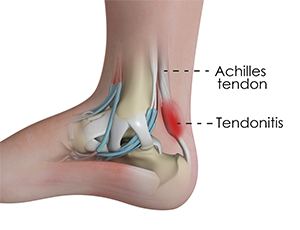
If you have Achilles tendinitis, there are several treatment options available. Non-surgical options include resting the foot, limiting physical activity, and switching to less strenuous activities. Physical therapy can also help the pain. Physical therapy can help strengthen the Achilles tendon and reduce swelling and pain.
Achilles Tendinitis Norwood specialist will first determine the exact cause of your pain. Your doctor will also perform a physical exam and recommend treatment based on the diagnosis. In some cases, a diagnostic ultrasound is recommended to determine whether you have a tear in the tendon. You may also need to take anti-inflammatory drugs.
Surgery can also be an option if your condition is very severe. This procedure involves removing the damaged portion of the tendon and stitching the remaining healthy tissue back together. This procedure requires a few weeks of immobilization. The patient will also need to take physiotherapy and take part in range of motion exercises to strengthen the lower limb. Eventually, you will be able to return to athletic activities. However, your recovery will take several months or a year.
Fortunately, most cases of achilles tendinitis and ankle sprains and can be treated without surgery. The conservative treatment options that are available will take weeks or months to complete. However, it is vital to not skip any treatment as this may cause setbacks in your recovery. When you are unsure of how to proceed, consult a physician in Ankle sprains Prospect Clinic who specializes in achilles tendinitis and ankle sprains injury treatment.
The first step in treating Achilles tendon pain is to determine what caused the inflammation. Many cases of Achilles tendinitis are triggered by repetitive activities or overuse of other tendons. People with high arched feet or flat feet are at risk of developing this condition. The most effective treatment for this condition is a combination of rest and stretching exercises.
If nonsurgical treatment is unsuccessful, surgery may be necessary. Surgery involves making an incision in the lower leg and reattaching the tendon. However, this is often not enough, and the patient will need physical therapy and rehabilitation for several months. The recovery time depends on the severity of the injury, but in most cases, patients will need up to a year.
Achilles tendinitis is a condition of the Achilles tendon, which connects the calf muscles to the heel bone. Symptoms include pain, tenderness, and stiffness, which may improve with activity. The condition is typically mild, but can become debilitating if left untreated.
Non-insertional Achilles tendinitis affects the middle portion of the Achilles tendon. This area is not well-supplied with blood and does not heal as quickly as the rest of the tendon. Moreover, this condition is degenerative, which means that the tendon fibers will begin to tear over time. This condition is accompanied by bone spurs.
Conservative treatment options for Achilles tendonitis include physical therapy, ice/heating, and heel lifts. In severe cases, surgery may be necessary. Conservative treatments such as physical therapy, rest, and medication can help you recover from the pain and discomfort. If conservative measures don’t work, Regenerative Medicine treatment can help. These treatments take advantage of the body’s natural healing mechanisms to heal the tendon.

 September 27th, 2022
September 27th, 2022  adminva2
adminva2  Posted in
Posted in